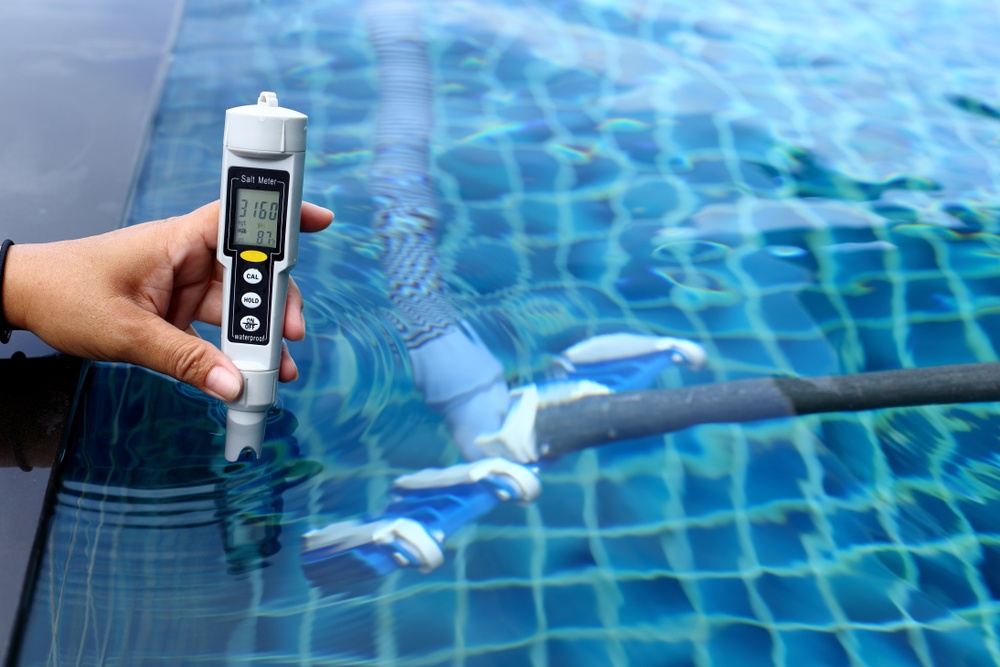
Calcium Build-Up Can Be Prevented in Your Pool
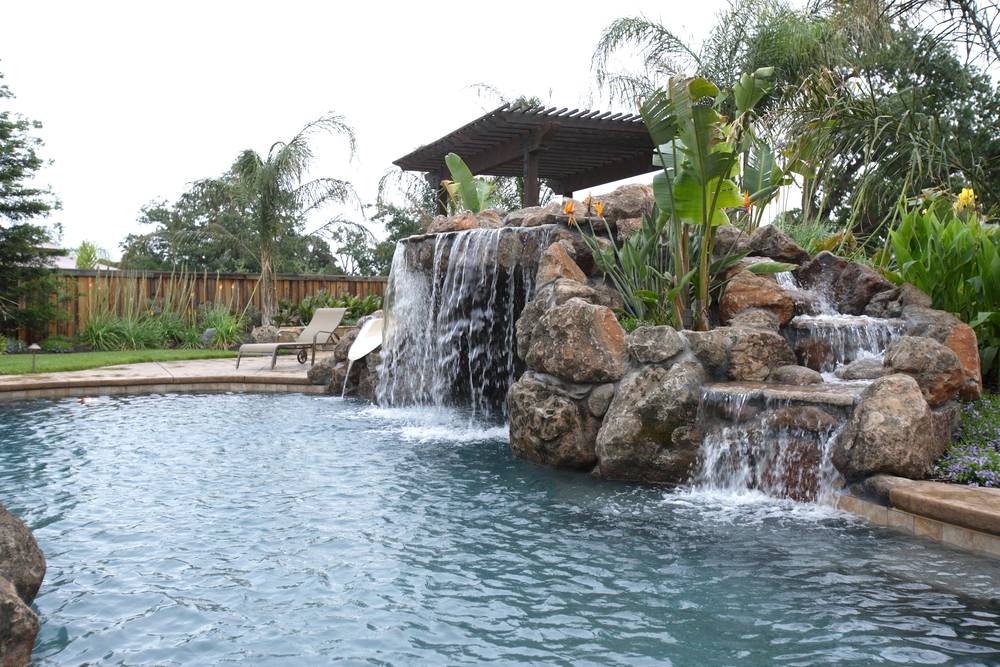
Calcium build-up on waterfalls and other pool surfaces is a common issue that baffles many pool owners. This article delves into the causes of this phenomenon and explores various solutions and preventive measures, drawing insights from experienced pool owners and maintenance experts.
Calcium is a natural element in water, and its presence is essential for maintaining the structural integrity of pool surfaces, especially those with plaster. However, this same element can lead to unsightly calcium deposits, particularly in areas where water is constantly flowing, such as waterfalls. These deposits are not just a cosmetic issue; over time, they can cause damage to the pool’s surface.
The Build-Up Is Inevitable
The first thing to understand is that calcium build-up is an inevitable aspect of pool maintenance. Even pools owned by the affluent, like Jeff Bezos and Bill Gates, are not immune to this issue, which underscores the fact that it’s a universal challenge not solved merely by investing in expensive treatments. The constant exposure of water to air and surfaces leads to calcium deposits, a natural process akin to the ebb and flow of tides. This realization is crucial in setting realistic expectations for pool maintenance.
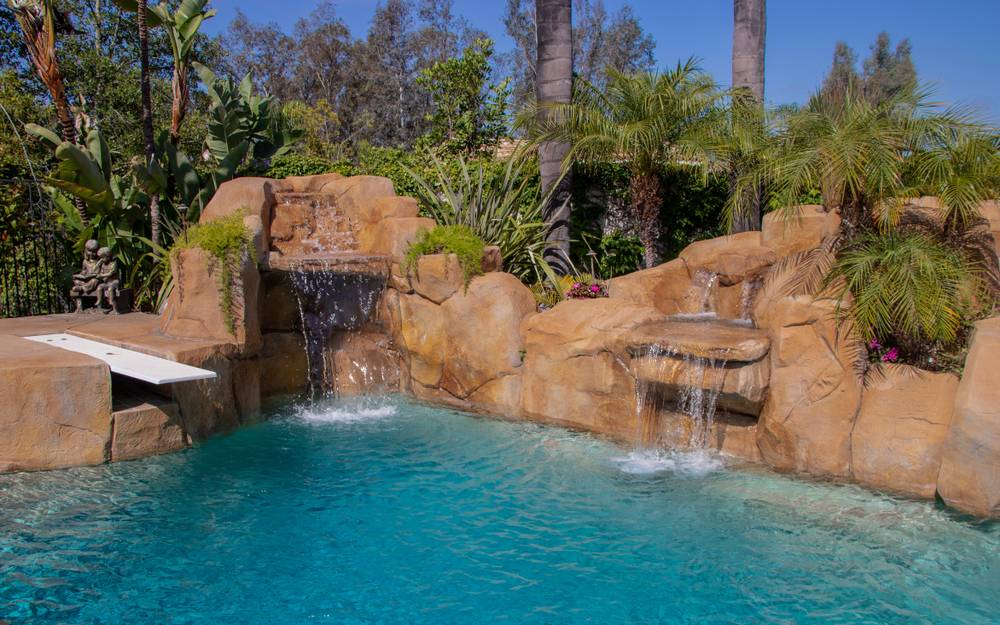
Latest

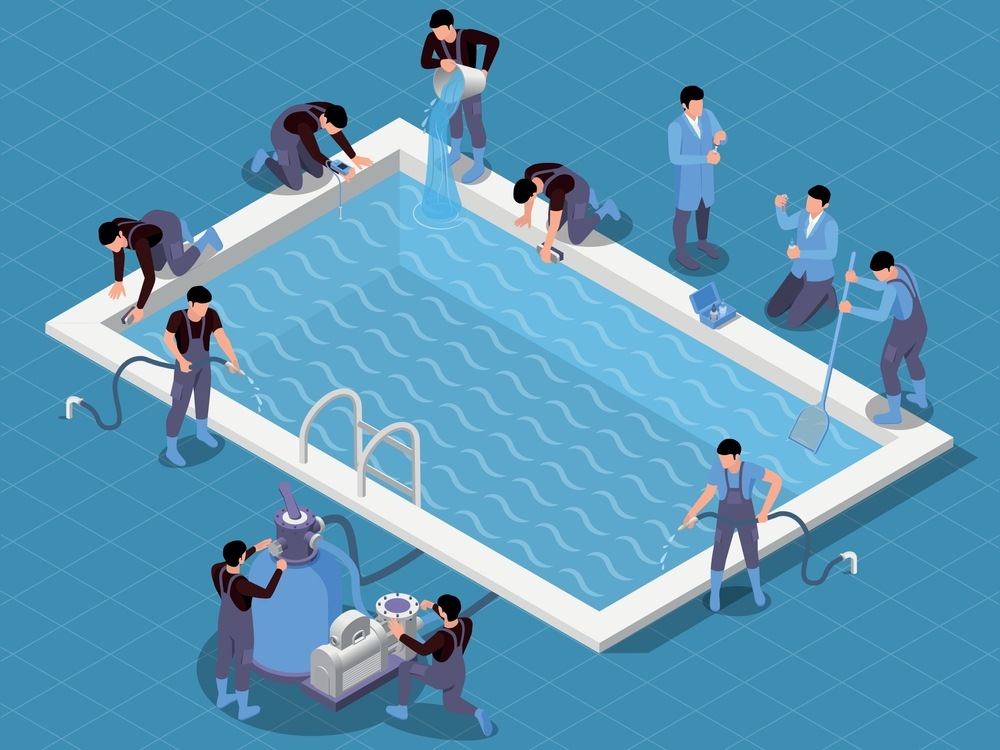
How Do You Properly Clean a Fiberglass Pool in 2024?
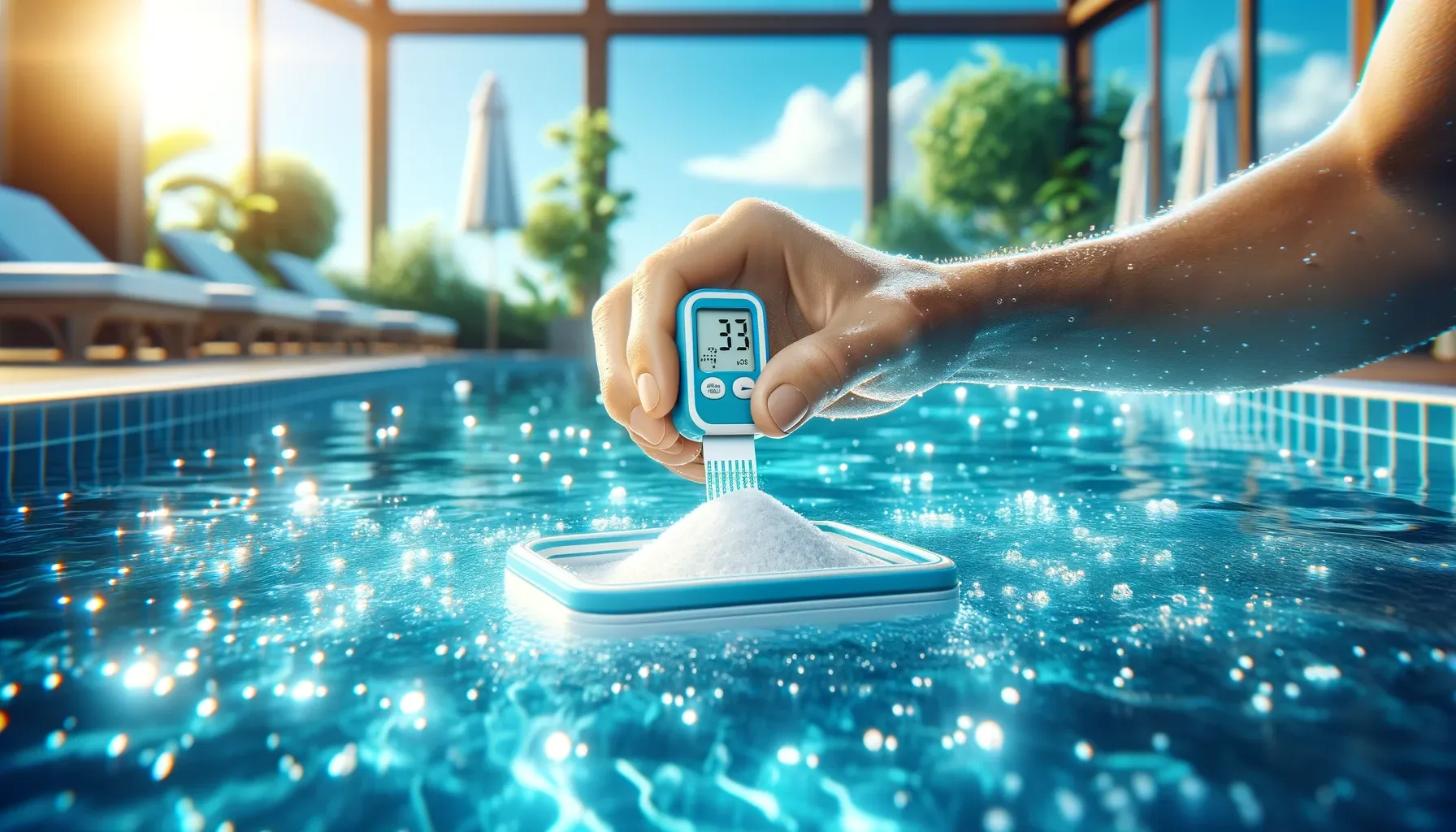
How Do You Know If Your Pool Needs Salt?
Categories
How To Address The Calcium Build-Up
Using muriatic acid
When addressing calcium build-up, there are several methods and considerations. One popular approach is using muriatic acid. This strong acid reacts with calcium deposits, helping to dissolve them. However, its effectiveness varies, and there’s a significant caveat: muriatic acid can be harsh on the pool’s surfaces, especially if not used correctly. It’s vital to apply it carefully to avoid damaging the pool’s plaster or stonework.
Bead or Glass blasting
For those looking for alternatives to chemicals, physical methods like bead or glass blasting are effective. These methods involve using high-pressure air to blast small beads or glass particles against the calcium deposits, effectively removing them. While effective, these methods can be costly and might require professional assistance.
Regular pool maintenance
Another critical aspect of dealing with calcium build-up is prevention. Regular pool maintenance plays a significant role in minimizing calcium deposits. This includes maintaining the pool’s water chemistry, especially the Calcium Hardness (CH) levels. Keeping these levels in check helps prevent excessive calcium from depositing on pool surfaces. It’s also essential to understand that the age of the water affects calcium levels; old water tends to have higher calcium content.
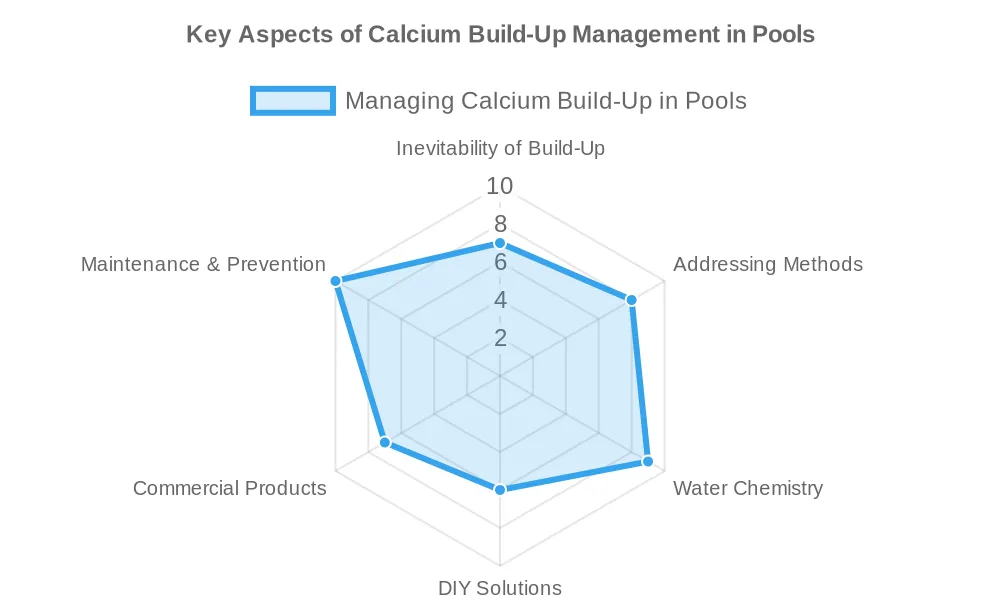
Role of Water Chemistry in Preventing Calcium Build-Up
Continuing our exploration into the management of calcium build-up in pools, particularly on waterfalls, it’s essential to dive deeper into the role of water chemistry. Balancing your pool’s water chemistry is not just about maintaining clarity and hygiene; it’s also crucial in controlling calcium deposition.
Calcium Hardness (CH) level of pool water
The Calcium Hardness (CH) level of pool water plays a pivotal role. CH is a measure of how much calcium and magnesium are dissolved in the water. Ideally, the CH level should be balanced to prevent both scaling and corrosion. If the CH level is too high, calcium tends to precipitate out of the water, leading to scaling. On the other hand, too low CH levels can cause the water to become aggressive, leaching calcium from the pool surfaces, and eventually, this leached calcium can contribute to scaling. The goal is to maintain CH levels within an optimal range, typically between 200-400 parts per million (ppm), to mitigate the risk of scaling.
The Langelier Saturation Index (LSI)
Another critical factor in water chemistry is the Langelier Saturation Index (LSI). The LSI is a calculated value that indicates whether your pool water is in a state of balance. It takes into account factors like pH, total alkalinity, and temperature, in addition to CH. A balanced LSI helps ensure that the water neither scales nor corrodes pool surfaces.
Apart from chemical balance, physical maintenance plays a significant role. Regular cleaning and brushing of pool surfaces can prevent calcium deposits from becoming too thick or hard to remove. For instance, using a pumice stone on tile walls or waterfall surfaces can be an effective way to manually remove early-stage calcium build-up. However, caution is advised to avoid scratching or damaging the surface.
Doing It Yourself
DIY solutions have been shared by pool owners, ranging from using cleaning vinegar to dry ice blasting. These methods offer varying degrees of success, but they underscore the community’s ingenuity in dealing with this persistent problem. Cleaning vinegar, with its acetic acid content, can help dissolve calcium deposits, particularly on non-porous surfaces. Dry ice blasting, while less common, uses the power of extreme cold and carbon dioxide to ‘blast away’ the deposits, a method that’s effective but might require professional handling.
Commercial Products Available for Tackling Build-Up
In the quest to keep pool waterfalls and other surfaces free from calcium build-up, commercial products like Scaletec and Sequa-Sol have been mentioned as potential solutions. These products are formulated to target calcium deposits, offering a more convenient alternative to manual cleaning methods. Scaletec, for instance, is a descaler that can be added to pool water, where it works to dissolve and lift calcium deposits from surfaces over time. Sequa-Sol is a sequestering agent that helps prevent scale formation by binding with calcium and other minerals in the water, keeping them in solution rather than allowing them to deposit on surfaces.
May Work but Are Not Permanent Solutions
While these products can be effective, it’s important to note that they are not permanent solutions. Calcium build-up is a recurring issue, and even with the use of descalers and sequestering agents, regular maintenance is necessary. This includes monitoring and adjusting water chemistry regularly, as well as physical cleaning and brushing of the pool surfaces.
In addition to chemical treatments, some pool owners have found success with alternative methods such as bead or glass blasting for removing tough calcium deposits. These methods, while effective, require professional equipment and expertise. They work by blasting tiny beads or glass particles at high pressure onto the pool surfaces, effectively removing the calcium without causing significant damage to the underlying surface.
Another aspect of pool maintenance that can help in reducing calcium build-up is the choice of materials used in the pool’s construction. For instance, using white stone or light-colored tiles can help mask calcium deposits, making them less visually obtrusive. Additionally, choosing smooth, non-porous materials for areas prone to water flow can make cleaning easier and reduce the likelihood of calcium adhering to the surfaces.
Finally, the importance of regular pool maintenance cannot be overstated. This includes not only keeping the pool’s water chemistry balanced but also regularly cleaning and inspecting the pool for early signs of calcium build-up. Catching and addressing these signs early can prevent the deposits from becoming extensive and difficult to remove.
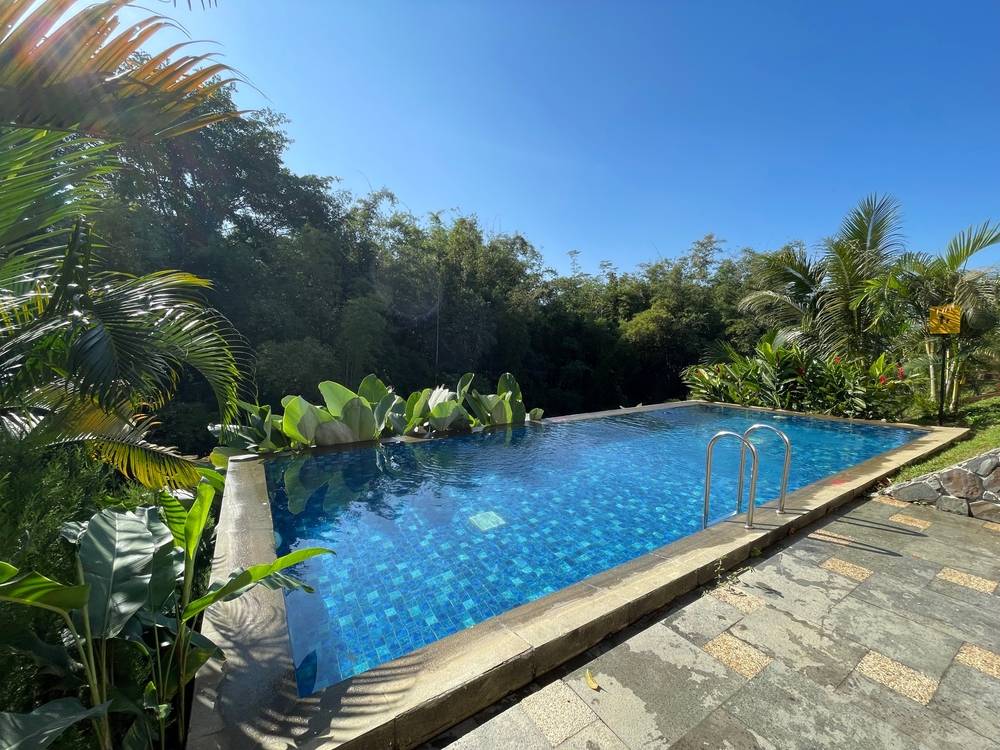
Conclusion
In conclusion, while there is no foolproof method to completely prevent calcium build-up in pools, a combination of regular maintenance, careful water chemistry management, and the use of specific cleaning methods and products can significantly mitigate the problem. Pool owners should be prepared for some level of maintenance to keep their pools looking clean and clear, embracing it as a part of the joy and responsibility of pool ownership.
Latest

How to Maintain the Recommended Salt level in your Pool in 2024

How Do You Properly Clean a Fiberglass Pool in 2024?

How Do You Know If Your Pool Needs Salt?
Categories
YOU'RE NOT IN THIS ALONE
We are with you every splash of the way
Need a pool fix or looking for an upgrade? We’re just one click away to help with all your pool needs.

